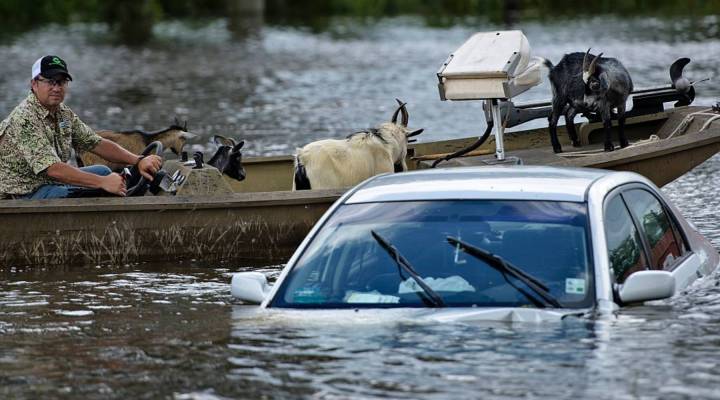
Louisiana floods: a new normal?

The latest figures from Louisiana’s flood paint a picture of catastrophe. At least 10 people have been killed, according to news reports. Tens of thousands of homes are damaged, and more than 20,000 people have been rescued from rising waters.
Though terms such as “historic” and “unprecedented” have been used to describe the storm and subsequent flooding, more are likely to occur around the country. National forecasters said heavier than expected rainfalls can be expected, largely due to global warming.
“As the air temperature increases, then we have a greater capacity to hold moisture in the atmosphere, and so we do see these heavy rainfall events occurring even more often in the future,” said David Easterling, a research climatologist with the National Oceanic and Atmospheric Administration.
Compounding that problem is an aging infrastructure for managing runoff.
“Most of the infrastructure in the United States that deals with floods — so that’s dams and levees — are five or six decades old,” said Eric Halpin, deputy dam and levee safety officer for the U.S. Army Corps of Engineers. “They were designed for the events. and frankly, the population of a couple generations ago.”
The American Society of Civil Engineers rated the nation’s dams and levees at a D and D-minus respectively in its latest report card. Updating the system to would cost billions of dollars, but Halpin said the price would be worthwhile.
“The choice for the country really is to either invest on the front end in these preventative measures — so, it’s safety programs where you’re evaluating the risk and acting on it ahead of time — or to live in a disaster-relief environment,” he said.
There’s a lot happening in the world. Through it all, Marketplace is here for you.
You rely on Marketplace to break down the world’s events and tell you how it affects you in a fact-based, approachable way. We rely on your financial support to keep making that possible.
Your donation today powers the independent journalism that you rely on. For just $5/month, you can help sustain Marketplace so we can keep reporting on the things that matter to you.


















